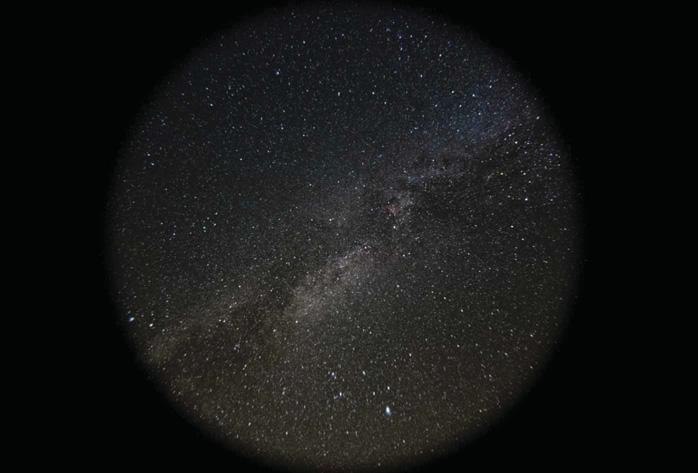
The night sky can be breathtaking, especially when it contains bright views of the Milky Way from a darksky location. But what's the best way to capture the entire stretch of the night sky? There are several methods, but as ever compromises have to be made.
A camera with an interchangeable lens system such as a DSLR or mirrorless camera gives you the best of all worlds, allowing you to go wide-angle or mid-angle. A wide-angle lens has a focal length of 17mm or less, a mid-angle is 18-40mm. Anything over this is getting in too close to the subject to be considered all-encompassing.
If you choose a mid-angle focal length, you'll be able to cover a decent portion of the Milky Way, but you'll need to consider mosaicking shots together to cover all of it. However, seemingly perfect shots can then reveal issues such as lens distortion and edge vignetting, so be prepared to put significant time into a Milky Way mosaic in order to get something that looks natural.
An alternative is to use a wide-angle lens, essentially capturing most of the visible part of the Milky Way in one fell swoop. It seems an obvious choice to reduce workload, but wide-angle lenses have drawbacks of their own.
As with meteor photography, using a wide-angle lens may seem the ideal route - catching a trail is down to luck, but the narrower the field of view, the less chance of success. So it seems a no-brainer to choose a lens that covers the entire sky in one go.
This story is from the August 2023 edition of BBC Sky at Night Magazine.
Start your 7-day Magzter GOLD free trial to access thousands of curated premium stories, and 8,500+ magazines and newspapers.
Already a subscriber ? Sign In
This story is from the August 2023 edition of BBC Sky at Night Magazine.
Start your 7-day Magzter GOLD free trial to access thousands of curated premium stories, and 8,500+ magazines and newspapers.
Already a subscriber? Sign In

Unearthing galaxies in the archives
Comparing old Hubble data to today is revealing distant active galaxies

Voyager 1 is back online and exploring the unknown
An interstellar rescue brings the venerable spacecraft back after months out of action

When Haydn met the Herschels
Jonathan Powell on how the astronomer siblings inspired the famous composer

A quicker way to colourise your narrowband frames
Create a bicolour image in Siril using data from just two narrowband filters

Manhattanhenge
New York's urban island of Manhattan, with its gridiron street layout, sees summer Suns set neatly between skyscrapers. Jamie Carter explains the phenomenon

A very British eclipse
In 1927, Britain experienced its first total solar eclipse since 1724. Mike Frost looks at how, like 8 April 2024's US spectacle, eclipse fever swept the nation

The spirit of the eclipse
Eclipse chaser Yvette Cook reports on what it was like in the path of totality in Texas during 8 April's Great American Eclipse

Cosmic rays
In part two of our series, Govert Schilling looks at cosmic rays, the high-energy particles that bombard Earth from space

Stones of the SOLSTICE
Jamie Carter explores 12 ancient stones, tombs and temples across the world that align with the Sun at the solstice

Surfing spacetime with LISA
A new era of gravitational wave astronomy is on its way as the ambitious upcoming LISA space mission joins a host of huge detectors on Earth. Charlie Hoy explains